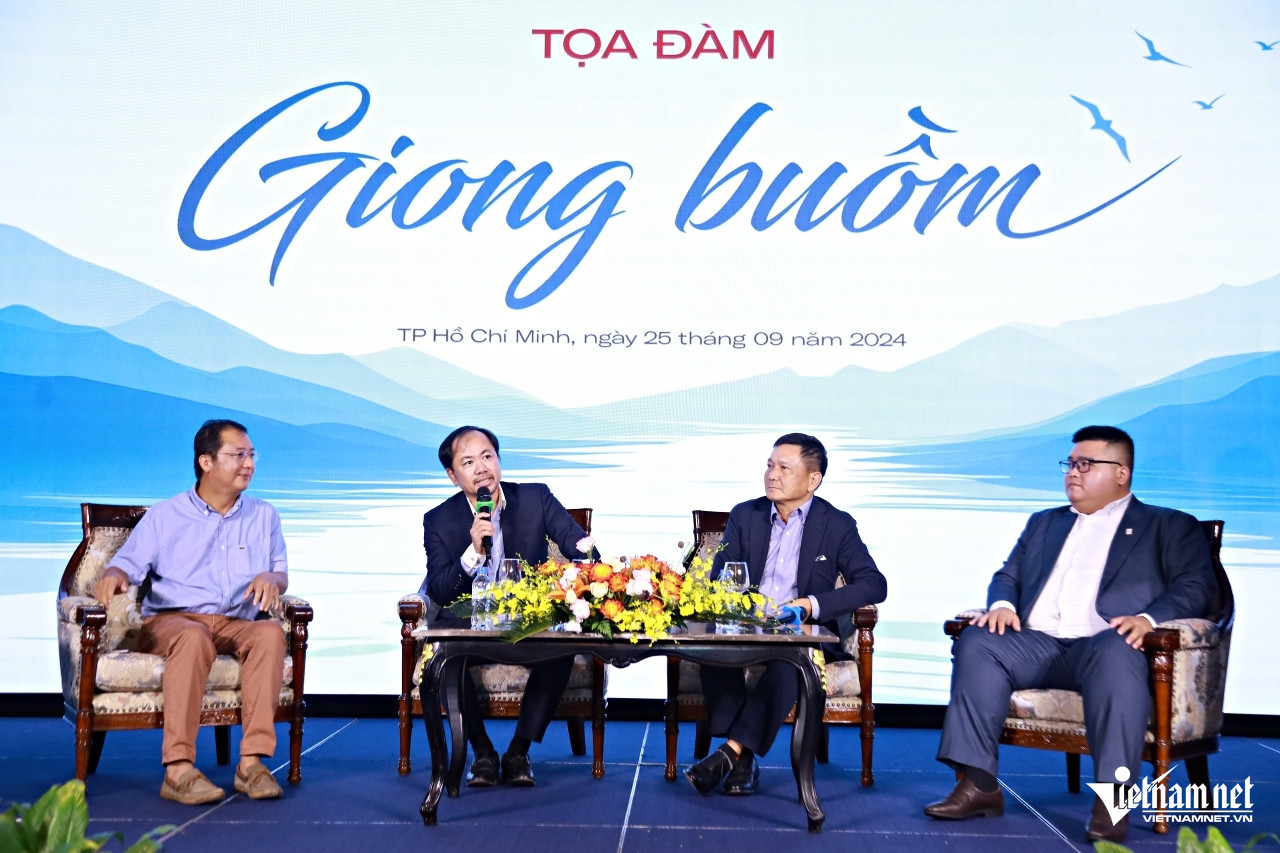
The seminar titled "Giong buom" (Setting Sail), a part of the competition, was held several days ago after the prizes were given to winners.
There were four speakers, including Tran Viet Anh, president of Binh Dinh F1 JSC; Dang Bao Hieu, president of Focus Travel and president of Ana Marina Nha Trang; Po Tran, chair of East Saigon under JCI (Joint Commission International); and Hoang Tu Giang from VietNamNet.
Hieu said he had spent a lot of time surveying the market and learning about international river tourism, and found that Vietnam is missing a great opportunity to make money.
Po Tran said that in the south, 60 percent of tourism products of his company come from the Mekong River. Its river tourism products attract 500-800 foreign travelers. However, he can see problems in the field. Travelers complain there is too much waste at destinations, and there are few memorable special features for tourism firms to introduce to their clients.
Anh noted that domestic enterprises do not cooperate with each other for mutual benefit, especially enterprises in the same business field. He can see that businesses compete with each other by slashing prices. These are the major reasons why river tourism cannot develop.
Giang from VietNamNet noted that Vietnam has many rivers but the country is not creating GDP from the rivers. He cited reports as saying that Vietnamese create $2 of GDP for every cubic meter of water they have, while the figure is $20 in other countries.
“We are rich in water resources, but we still cannot exploit the natural resources well,” said Giang, adding that Vietnamese overexploit and abuse rivers rather than use rivers for sustainable development.
Giang believes the most important factor for sustainable development is planning and the institutional regime. It is necessary to set reasonable policies so that businesses can better use rivers.
Ideas
The sustainable development of river tourism, according to Dang Bao Hieu, can be implemented through five factors. First, the participation of the state which plays an important role. Second, businesspeople. And others include investors, local authorities, and media agencies.
“The harmonious and close combination of the elements will create a perfect picture of sustainable development,” he said, adding that love for rivers and work will help the dream of sustainable development.
Po Tran said in addition to love and an institutional regime, tourism companies need to find a ‘captain’ that drives the vessel of river tourism in the right direction.
Duong Duc Minh from the HCM City Institute for Tourism Economic Development Research, noted that the convergence threshold, which his institute has researched since 2017, shows that the riverside community is disadvantaged and craves access to the outside world and tourism.
This is an opportunity for investors and businesses to narrow the gap between the riverside residential community and the outside world.
With the convergence threshold view, the institute has joined forces with the HCM City Tourism Department to launch a community tourism model in Thieng Lieng which has gained initiative achievements.
He stressed that there are beautiful rivers but also rivers facing risks and challenges. In such conditions, it is necessary to keep a diverse approach to settle the problem in the best way.
Luong Hoai Nam, member of the Tourism Advisory Board, noted there are opportunities to help river tourism develop and bring more benefits to localities and riverside communities. He suggested that localities make heavy investments to develop landscapes on both sides of rivers to have more tourism products to attract travelers.
Ha Nguyen